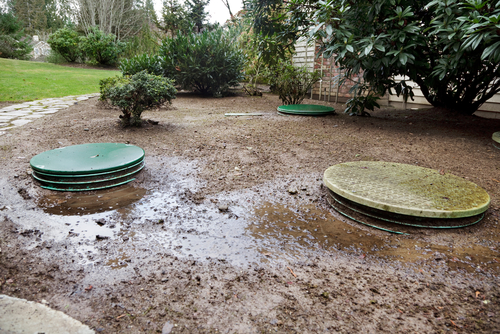UST Enforcement Finds Leak Detection Lacking
In June and July 2014, the EPA announced enforcement settlements that illustrate the need for all UST owners and operators, from the largest to the smallest, to comply with regulatory requirements. In early June, for example, the U.S. Postal Service (USPS) in Virginia certified it was in compliance with federal and state UST regulations through a settlement with the EPA. The settlement covered five USPS facilities throughout the state and included alleged violations and monetary penalties for the following:
1) Failure to conduct release detection testing, an annual test of the line leak detector and an annual line tightness test, and failure to investigate and report a suspected release associated with its 10,000-gallon (gal) gasoline tank—$16,469 penalty.
2) Failure to conduct an annual test of the line leak detector associated with its 4,000-gal gasoline tank—$5,514 penalty.
3) Failure to conduct an annual test of the line leak detectors associated with three of its 10,000-gal diesel and gasoline tanks—$15,296 penalty.
4) Failure to conduct an annual test of the line leak detector associated with its 10,000-gal gasoline tank—$3,399 penalty.
5) Failure to conduct an annual test of the line leak detectors associated with its 10,000 gal gasoline tank; 4,000-gal diesel fuel tank; 1,000 gal motor oil tank; and a 1,000 gal used oil tank—$14,580 penalty.
Forget expensive calls to lawyers and consultants. With Enviro.BLR.com, you get instant access, 24/7. Try it out today and get the 2014 EHS Salary Guide, absolutely free. Download Now.
Later in June, the EPA announced a settlement with a Petersburg, Virginia, deli for alleged violations relating to its 6,000-gal UST used to store kerosene. The company was cited for not complying with required monthly leak detection activities and annual testing of leak detection equipment. In addition to correcting the alleged noncompliance, the company will pay a $9,155 penalty.
Just a few weeks later, in early July, the EPA announced a settlement with the U.S. Army at its Fort Wainwright Garrison near Fairbanks, Alaska. At the site, the Army had 20 USTs, some of which have capacities up to 30,000 gal, and were used to store gasoline, diesel, used oil, jet fuel, and antifreeze.
During inspections performed in 2012 and 2013, the EPA found that 19 of the 20 USTs at Fort Wainwright were out of compliance and that the Army failed to perform leak detection tests, monitor USTs regularly, and investigate suspected releases as required under the Resource Conservation and Recovery Act (RCRA). According to the EPA, under the settlement Fort Wainwright hired a new operator to manage federal and state regulatory compliance and has decommissioned and removed some of the tanks from service. The Army was assessed a penalty of almost $158,700 for the violations.
Everything You Need for Environmental Compliance
Enviro.BLR.com puts everything you need at your fingertips, including practical RCRA, CAA, CWA, hazardous waste regulatory analysis and activity, news, and compliance tools. Try it at no cost or risk and get a FREE report.
These three recent enforcement actions are just the tip of the iceberg when it comes to UST noncompliance. In its publication, UST Common Compliance Violations Report – FY 2012 (released April 2014), the Association of State and Territorial Solid Waste Management Officials’ (ASTSWMO) UST Task Force ranked violations (as a percent of total violations) for frequency as follows:
- Release detection in pressure piping (24.9%),
- Release detection in tanks (19.2%),
- Spill prevention (11.7%), and
- Financial responsibility (10.4%).
In short, the report states, “Nearly half of the total violations are related to release detection. In comparison, release prevention issues only account for about 22% of the violations.”
The report also notes that numbers of all of the violations except spill prevention decreased from 2010 to 2012. However, violations related to operator training increased over that period from 5% to 42%, which the report attributes to “states’ efforts to implement and enforce the operator training requirements of the Energy Policy Act of 2005.”
